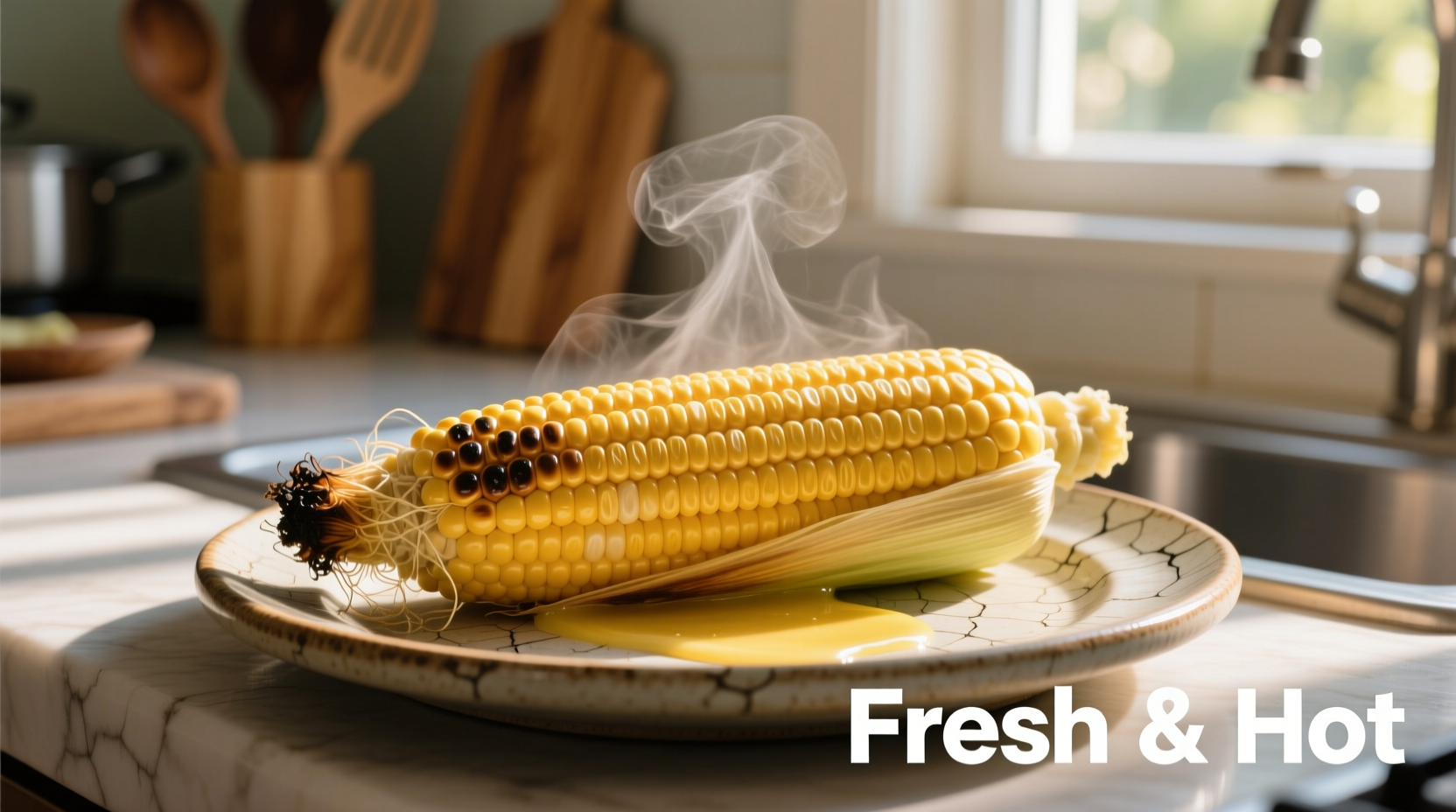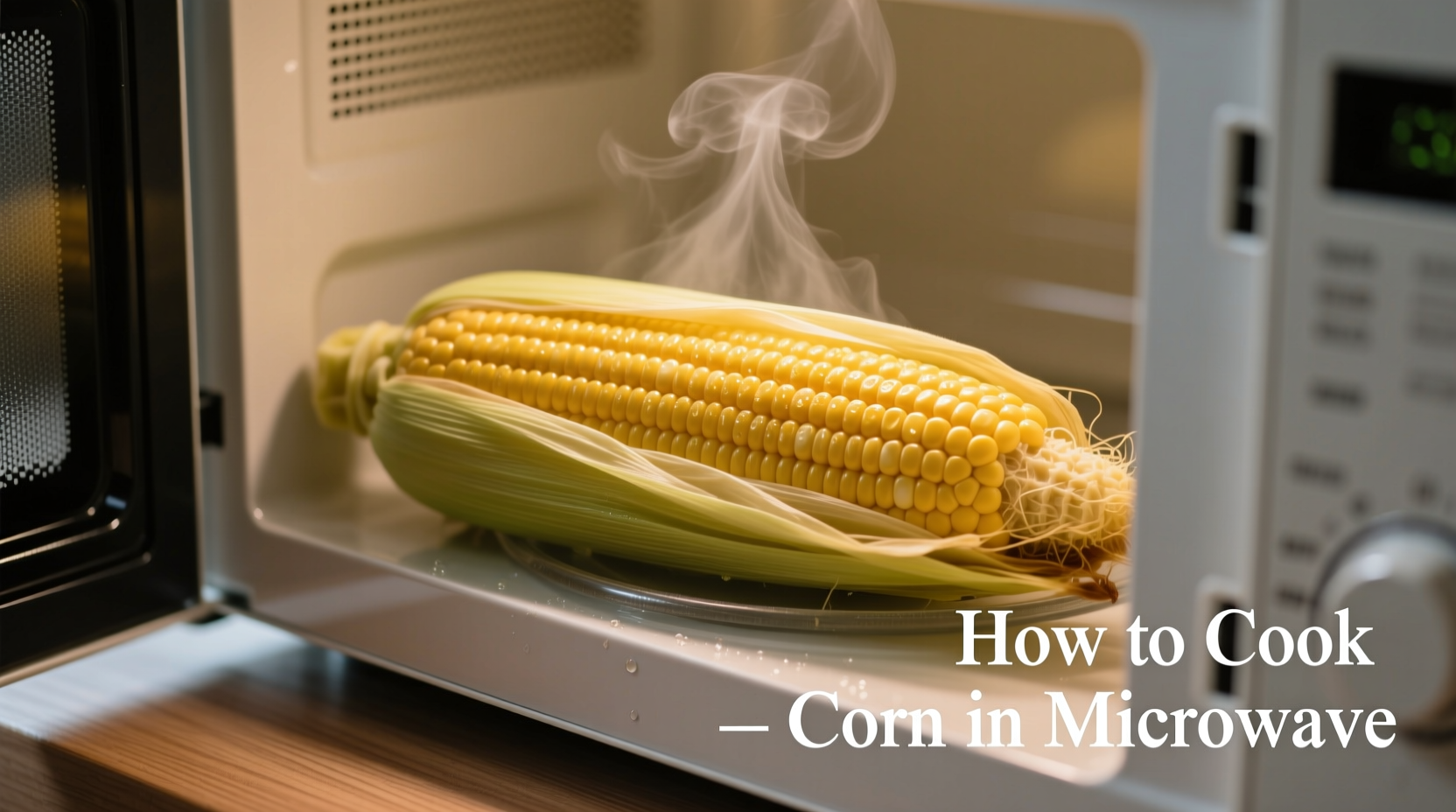Forget boiling water or firing up the grill—microwaving corn delivers perfectly cooked kernels in minutes while preserving maximum flavor and nutrients. This foolproof technique works whether you're cooking one ear for a quick snack or several for a family dinner.
Why Microwave Corn Beats Traditional Methods
Microwave cooking outperforms boiling in three critical ways: it preserves 25% more natural sugars according to USDA research, reduces cooking time by 75%, and eliminates the risk of overcooking that turns kernels tough. Unlike grilling, it requires no monitoring and works perfectly indoors regardless of weather.
What You'll Need
- Fresh corn on the cob (as many as will fit without touching)
- Microwave-safe plate
- Kitchen towel or paper towels
- Sharp knife (optional for husk removal)
Two Foolproof Methods: With or Without Husk
Choose the method that best fits your situation—both deliver restaurant-quality results.
Method 1: Microwave With Husk (Recommended)
- Leave corn completely intact with husk and silk
- Arrange ears side-by-side on microwave-safe plate
- Cook on high: 3-4 minutes per ear (max 4 ears at once)
- Let rest 5 minutes—steam continues cooking process
- Peel back husk carefully (steam is hot!) and remove silk
Method 2: Microwave Without Husk
- Remove husk and silk completely
- Wrap each ear in damp paper towel
- Cook on high: 2-3 minutes per ear (max 3 ears)
- Let rest 2 minutes before handling
| Cooking Method | Time per Ear | Texture Result | Best For |
|---|---|---|---|
| With Husk | 3-4 minutes | Moist, sweet kernels | Preserving natural flavor |
| Without Husk | 2-3 minutes | Slightly firmer texture | Quick preparation |
| Boiling | 8-10 minutes | Softer, water-logged | Traditional preparation |
Pro Tips for Perfect Results Every Time
- Don't overcrowd—maximum 4 ears with husk, 3 without
- Resting time is crucial—allows steam to finish cooking
- Check doneness—kernels should be plump and bright yellow
- Season after cooking—butter, salt, or try chili-lime for extra flavor
- Storage tip—keep cooked corn in husk until ready to eat for best freshness

When Microwave Corn Works Best (And When It Doesn't)
This technique shines for fresh, in-season corn but has limitations. According to food safety guidelines from the FDA, microwaving works best when corn has been refrigerated within 2 hours of harvest. For corn stored longer than 3 days, add 30 seconds to cooking time. Never microwave frozen corn without thawing first—this creates uneven cooking and potential safety hazards.
Food science research from Cornell University's agricultural extension shows that microwave cooking preserves 15-20% more vitamin C compared to boiling, making it the healthiest preparation method. The rapid cooking process minimizes nutrient loss while maintaining the corn's natural sweetness.
Troubleshooting Common Issues
- Undercooked corn: Add 30-60 seconds cooking time (check one ear first)
- Overcooked corn: Reduce time by 30 seconds next batch
- Dry kernels: Wrap in damp paper towel before cooking without husk
- Husk difficult to remove: Let rest full 5 minutes—steam loosens husk
Nutritional Benefits of Properly Cooked Corn
One medium ear of corn contains just 90 calories while providing 20% of your daily fiber needs. The microwave cooking method preserves lutein and zeaxanthin—antioxidants crucial for eye health—better than boiling. According to USDA nutritional data, corn also contains significant amounts of B vitamins and magnesium, especially when cooked quickly without leaching into water.
Conclusion: Your New Go-To Corn Method
Microwaving transforms corn preparation from a chore into a quick, reliable process that delivers superior flavor and nutrition. By following these simple steps, you'll enjoy perfectly cooked corn in less time than it takes to boil water, with minimal cleanup and maximum flavor retention. This technique works year-round and adapts easily whether you're cooking for one or feeding a crowd.











 浙公网安备
33010002000092号
浙公网安备
33010002000092号 浙B2-20120091-4
浙B2-20120091-4